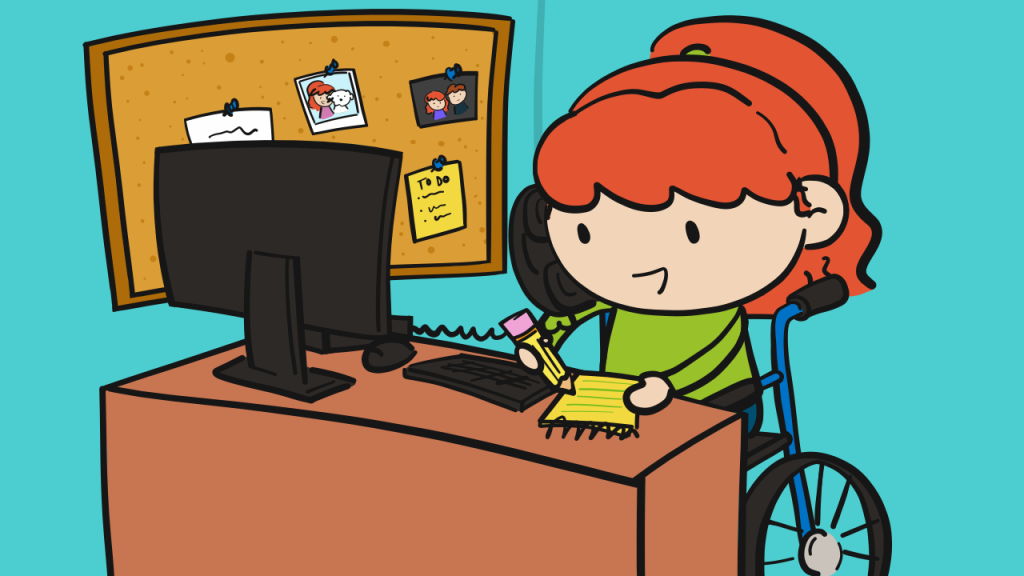People with disabilities are one of the fastest growing customer and employee bases. According to the Centers for Disease Control one in four Americans have a disability, and it is consistently growing. People with disabilities are beneficial to the workplace because they provide additional insights, increase diversity and improve morale and creativity. But, sometimes, it’s hard to know how best to interact with a person with a disability and what terms to use.
Many words and phrases have been used to describe a person with a disability, but there are some terms and actions that may be disrespectful and rude. So, how can you help to make a person with a disability feel comfortable and accepted?
Thankfully, there are many tips and techniques you can use to help you choose the best way to communicate and interact with a person with a disability.
-
Use Person First Language
One easy way to communicate with your coworkers and clients with disabilities is to use something called Person or People First Language. Person First Language is just that – putting the person before the disability. When talking to and about a person with a disability, refer to the person first and then their disability. But, only refer to the disability when it’s necessary, such as letting someone know there is a guest who needs assistance, or when describing a person, and part of their physical appearance is them using an assistive device, such as a wheelchair or a cane. A few examples of using Person First Language are:
- Instead of saying, “the wheelchair bound employee,” say, “the employee who uses a wheelchair.”
- Instead of “handicapped parking spot,” use the phrase “accessible parking spot.”
- Rather than “the autistic customer,” use the term “the customer with autism.”
- Rather than saying, “disabled people,” say, “people with disabilities,” or simply “people.”
-
Talk directly to the person with a disability
When interacting with someone with a disability in your workplace, always acknowledge their presence. The easiest way to do this is look directly at, and talk directly to, the person with a disability, even if a companion is present. The companion will usually help with communicating with the person if it is needed. But, only ask the companion for assistance with the permission of the person with the disability. It’s more respectful to do so.
-
Talk in a normal, friendly voice
Talk in your regular tone of voice when speaking to someone with a disability. A person with a disability will usually understand what is being said. They will usually tell you or communicate to you in another way if they don’t understand what you’re saying.
-
Slow down and be patient if needed
If they don’t respond right away, take your time when interacting with a person with a disability. Depending on the person’s specific disability it may take them extra time to answer or process what is being said. It doesn’t mean they’re being rude, are not listening, or don’t understand. Regular communication is harder for some people than it is for others. But, the person with a disability will respond, and they will appreciate your patience.
-
If you don’t understand what a person with a disability is saying, you can ask them to clarify for you
Remember that it’s okay to ask a person with a disability if you don’t understand what they are saying. They will usually try and make their words easier to understand by either repeating themselves, saying it in another way, or writing it down if they are able to. Asking the person to spell out words, especially when communicating with them over the phone, is also beneficial. Let’s say you’re a sales representative and someone with a speech impediment calls with a question about a specific product. If you do not understand what the caller is asking and you tell them so, they may repeat the question in a slower or more clear way.
- And remember, don’t ask a person with a disability’s companion for help unless the person with a disability gives you permission to do so.
-
If you would like to help a person with a disability, always ask them first
For a person with a disability, it can be confusing, and sometimes even dangerous, to start helping them without asking first. This is especially the case for people with visual impairments, as it can be disorienting for them if someone assumes they need assistance with navigating, due to their lack of vision. If you would like to help a person with a disability, always ask if help is needed before stepping in. Also, let the person guide or instruct you on how you can help. It is more beneficial to the person with a disability.
-
If a person with a disability has an assistive device such as a wheelchair, ask before touching or moving the device
Leaning on or touching a mobility aid, such as crutches or a walker, a person with a disability uses to help them with their daily lives without their permission can make them feel uncomfortable. Treat the device like an extension of the person’s body, and always ask before touching or moving it.
- Similarly, if a person with a disability has a service animal, always ask before interacting with the animal, and only do so when the animal is not “in action,” such as fetching an item for the person or guiding them to their workspace. The animal is there to help the person with the disability, and petting or playing with the animal can be distracting to it, especially when it is working. However, if the service animal is not performing any tasks, it is perfectly fine to ask the person with a service animal permission to pet or play with it.



